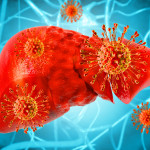The number of new cases of hepatitis C virus (HCV) has risen steadily among HIV-positive men who have sex with men (MSM) in San Diego. This trend, seen internationally, is likely driven by sexual transmission of HCV; meth and injection drug use are other risk factors.
Researchers analyzed data about new hep C cases among nearly 2,800 HIV-positive MSM at two large HIV clinics in San Diego between 2000 and 2015.
The researchers’ data set included almost 14,500 cumulative years of follow-up, during which 172 of the men tested positive for hep C. This meant an infection rate of 1.19 percent per year—meaning that if 10,000 similar men lived for one year, an estimated 119 of them would contract hep C.
The rate of new HCV infections increased over time. Between the four respective periods of 2000 to 2003, 2004 to 2007, 2008 to 2011, and 2012 to 2015, the rate rose from 0.36 percent, to 1.1 percent, to 1.14 percent and to 1.52 percent per year.
Compared with their non-drug-using counterparts, who had an infection rate of 0.49 percent per year, those who reported a history of both meth and injection drug use had a 4.5-fold higher rate, at 2.2 percent per year; those who reported only a history of meth use had a 3-fold higher rate, at 1.49 percent per year; and those who reported only a history of injection drug use had a 5.3-fold higher rate, at 2.6 percent per year.
“The good news is that with the excellent treatments for hepatitis C, most people can be cured,” says the study’s lead author, Antoine Chaillon, MD, PhD, a professor of infectious diseases at the University of California, San Diego. “The bad news is that hepatitis C is a growing problem, especially among the most vulnerable people in our communities. I do not think San Diego is unique in these issues.”






Comments
Comments